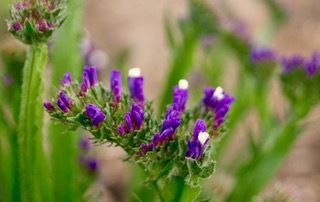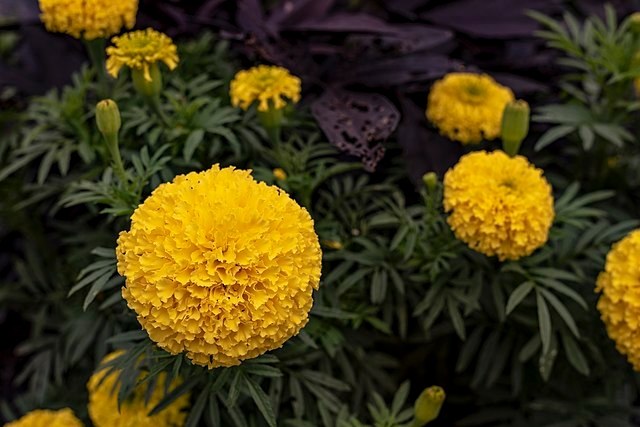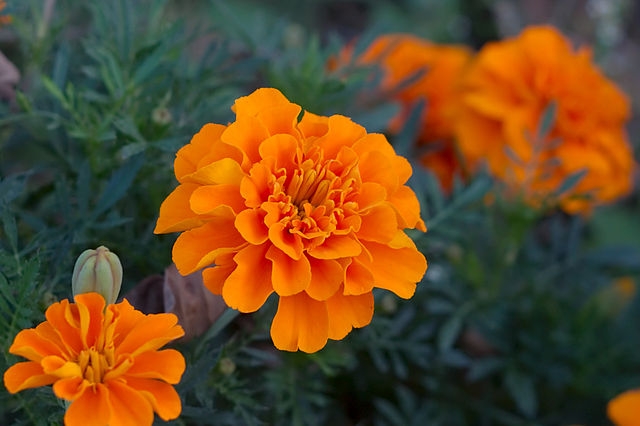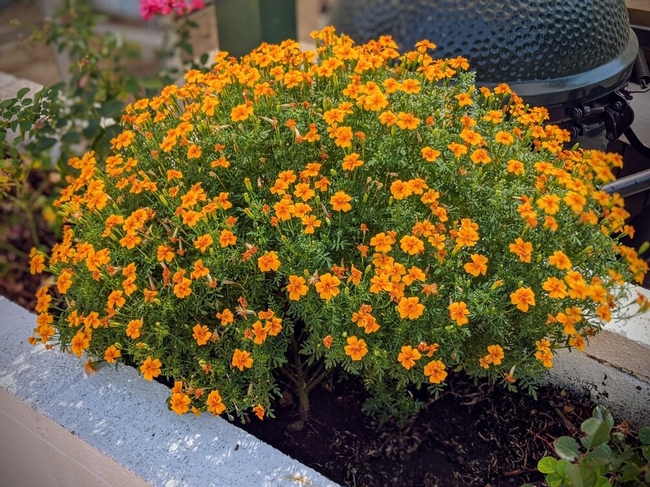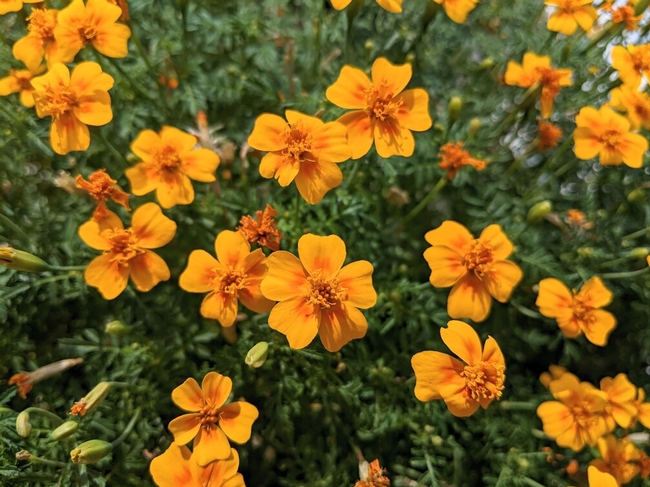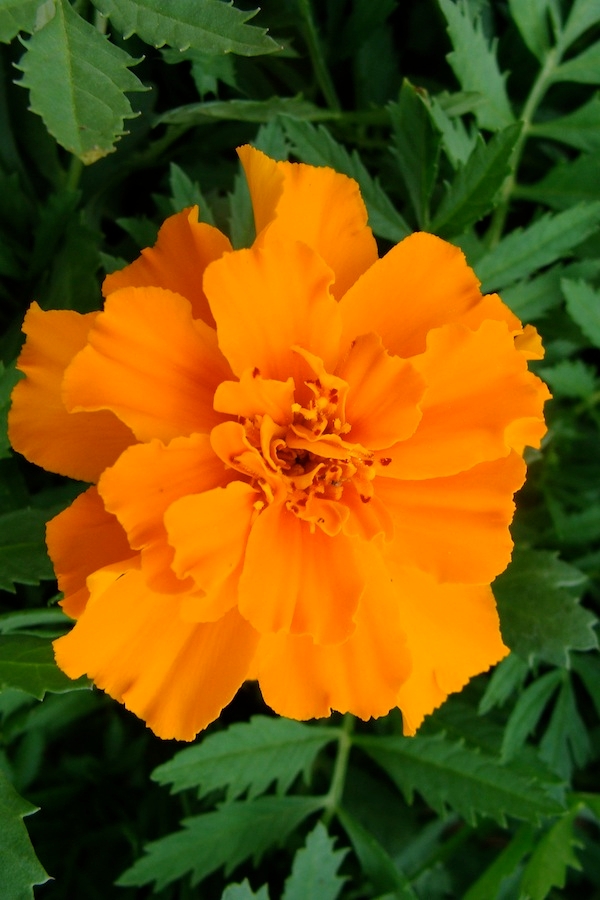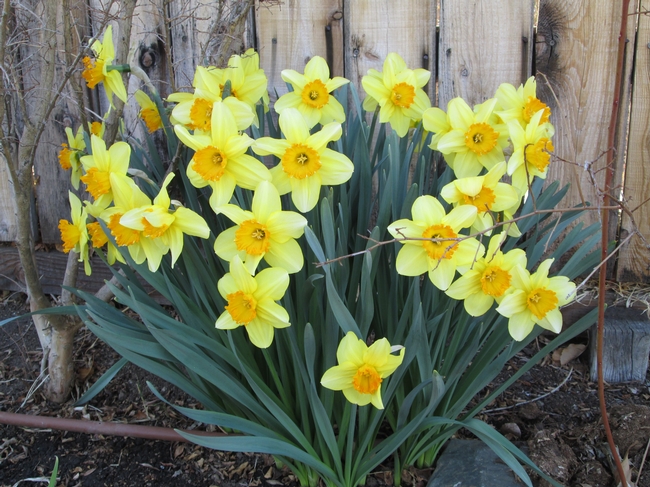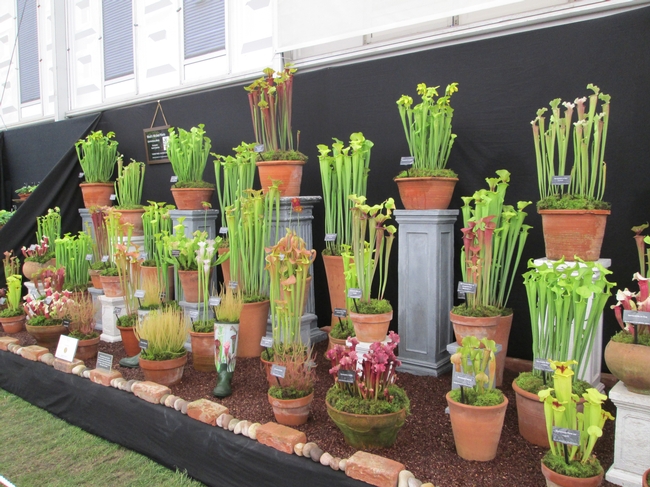- Author: Harold McDonald
I recently unearthed a bouquet of blue statice that I had hung to dry in the pantry, and it now brightens my bathroom, along with some ‘Moonshine' yarrow and lavender harvested early last summer.
Though I do have some star performers in my desert garden, I'm afraid nothing will ever quite compare to the armloads of easily-grown flowers I could collect nearly any day in Santa Cruz. When I saw those statice, it occurred to me that I could extend my season of color by planting even more flowers for drying. I did a little research and came across this amazing site that inspired me to expand my palette of dried flowers.
Globe amaranth (Gomphrena globosa) is a super-tough little annual from South America that blooms in late summer. It is so tolerant of high temperatures that there used to be a notion that it was planted at the gates of Hades. Now that's hot! I grew it 20 years ago when I lived in west Bishop, and I remember it as a welcome—if not too exciting—addition to the flower bed. But seedsmen and plant breeders have been paying attention to this little guy, and you can now find it in oranges and reds, in addition to the white, pink and purple I remember. The colors that make globe amaranth so striking actually come from stiff, papery, leaf-like structures called bracts—the same part that makes poinsettias and bougainvilleas so attractive)—the true flowers are so tiny that they are nearly hidden within the flower head.
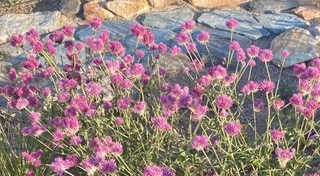

As I alluded to above, statice (Limonium sinuatum) has become a staple in my garden over the years. With statice, it's the flower sepals (collectively known as the calyx) that provides the color—the white flower petals fall away. Statice is super-easy to grow from seed, and they now come in so many more colors than the blue I have always grown.
And there are so many other possibilities to explore!
Many of us have grown the common annual bachelor's button (Centaurea cyanus). You may also know it as cornflower, so named because it was often found as a weed in fields of corn and other grains. Another familiar plant is the aptly-named strawflowers (Xerochrysum bracteatum). I'll bet you can guess what plant part provides this Australian import with its color! The big news with so many of these dried flowers is the new hues plant breeders have brought us.
Less familiar to me are the celosias (Celosia angentea cristata), which come not only in different colors, but in three different flower types: plumed, cockscomb and wheat! Sunballs (Crasspedia globosa), sea holly (Eryngium planum)and globe thistle (Echinops ritro) are three more to check out.
And you don't have to stop at flowers. Many grasses (bunny tails are nice) and members of the onion family are great in dried bouquets. In my own garden I discovered that the dried stalks of garlic chives are beautiful in the autumn garden, especially mixed with ornamental grasses and late bloomers like goldenrod. The problem, of course, is that by the time they are dry, they have spread their seeds far and wide!
As easy as most of these plants are to grow, drying the flowers is even simpler. Cut them when they first open, bundle them with string and hang upside down to dry. Florists sometimes use drying agents like silica gel, but my favorite method comes from a grower who tosses the flowers in the trunk of his car, parks it in the sun, and says they are perfect after 24 hours!
For more information on flowers to dry:
Select flower names in the articles to see photographs and more detailed descriptions.
- 30 of the best flowers for drying
- Grow everlastings for dried flowers
- Gomphrena—an antidote for the late summer blahs
*Brazilian verbena has become invasive in some warm-winter areas of the country, but our temperature extremes seem to prevent that here.
- Author: Dustin Blakey
I always like to grow some flowers in my garden. I usually grow cosmos, zinnias, or marigolds, all of which do great in the Owens Valley.
This year I had a great plan to try to have my garden mostly done by July. It didn't work out, but before I abandoned that goal, I planted bachelor's buttons. These annual plants flower quickly, and I had hoped they would be ready in time for graduation day in June. And they were. Sort of.
Bachelor's buttons—also called cornflowers—are in the same genus (Centuarea) as many thistles that do great in California. Some in fact are terrible weeds like yellow star-thistle: C. solstitialis.
I've never grown them here myself, but bachelor's buttons are about the world's easiest thing to grow. Just maybe not in the desert when it's blazing hot. (In my defense, I suspected they wouldn't like our summer. I was trying to finish up the garden before the heat was unbearable in my back yard.)
Some Centaureas do like our climate. Centuarea montana, a similar looking perennial plant, looks nice in the Owens Valley. Centuarea cyanus, at least when direct sown in the garden, was a disappointment for me.
In my past experience growing them, seed catalog images have been a fairly accurate representation of what to expect.
Here is what I ended up with:
As you can see in the picture, the flowers don't look so good. What's happening? Well, my garden is too hot. As soon as the blossoms open, they immediately desiccate. I suppose if I wanted to dry them that would be fine.
Bachelor's buttons like cool weather, and I planted these in early March. I had no issues with germination. They quickly popped up just like the weeds they're related to. Everything worked as planned, and my first blooms began Memorial Day weekend. (Hooray for planning ahead!) But then they just fried on the stems.
It could just be this particular mix. I'm sure it did fine in Oregon where the seeds came from. In my garden every day, even with ample water, these plants get a bit wilted in the afternoon. Other cultivars may do better, but I don't think I'll experiment again to find out which those may be. (If you have good luck with one, post in comments.)
From this experience, I'd recommend one of these strategies if you want to grow bachelor's buttons:
- Plant the perennial relative C. montana
- Start the seeds indoors in February and transplant to finish sooner
- Pick a cooler part of the yard and not in a hot corner like I have, or use a light shade cloth to lower the temperature
Higher elevation gardeners would probably be much happier with bachelor's buttons than I was. For my part, rather than moving up the grade and trying again, I think I'll stick with zinnias next year.
- Author: Dustin Blakey
Gardeners everywhere are familiar with marigolds. They are not exactly new. However, even though there are so many new types available now, I usually see people planting either the obnoxious pompom-shaped "African" marigolds, or the more diminutive "French" types.
Using place names to describe marigolds is a surprising taxonomic construction since neither type is found in Europe or Africa. In fact the genus Tagetes is native to southern Mexico.
While marigolds are great sources of color in the garden, especially if you deadhead the fading blossoms, there are some more interesting options that can be planted. Breeders have been selecting new species and making interesting crosses. A favorite of mine that is not commonly seen in our area is the signet marigold, Tagetes tenuifolia. Perhaps the easiest to find of this type is the cultivar 'Tangerine Gem'.
'Tangerine Gem' marigolds grow into a compact globe covered with orange (tangerine?) blossoms that need no deadheading. In my garden, I have had problems with earwigs and crickets eating the foliage of other marigolds, but at least earwigs seem to avoid this one. It has fine, dissected foliage that looks more like our native fernbush (Chamaebatiaria millefolium) than the usual marigolds. It tolerates full sun, but like most things in Owens Valley, prefers light shade in the afternoon. Mine started to bloom in mid-July and is exploding with color in these shorter days.
'Tangerine Gem' has edible blossoms, a nice bonus from the landscape! They are slightly bitter, but add interest and color to salads. Make sure you pluck off the petals. The base of the flower is very bitter and unappetizing.
One cool feature of many marigolds is that they are known to be antagonistic to root-knot nematodes. Unfortunately, this is one marigold that doesn't help. Many garden sources cite using 'Tangerine' marigolds, a cultivar of T. patula, to control nematodes. 'Tangerine Gem' is an entirely different plant. The University of Arkansas says that this cultivar may even make nematodes worse, so don't plant it where you've have nematode problems before. If nematode control is your goal, stick with other marigolds that have a good track record.
Chances are slim that you will find this marigold for sale locally as transplants, so the best way to get started with them is to buy seeds. (Thankfully inexpensive in this case.) All marigolds are easy to germinate. You can sow seeds directly in the garden 1/4" deep in April, just put out more than you need and thin out extras. It's usually best to start them inside. Make sure seeds are lightly covered. I've noticed this type starts a little slower than other marigolds, but it makes up for it later, with plenty of growth when the weather warms.
'Tangerine Gem' is a nice annual you should consider planting when you're planning out next year's garden.
- Author: Alison Collin
With bulb catalogs appearing in our mailboxes and high temperatures precluding gardening for much of the day many of us are no doubt dreaming of the spectacular flowers that we will be growing next year.
These bulbs will grow in the more moderate climates of the Owens Valley, and also in higher elevations such as Mammoth where they live quite happily under the winter snow and will burst into flower as soon as light reaches them. They are unlikely to do well in hot desert areas even with irrigation. Plant them as soon as you can since they should not dry out, and they begin to put out new roots in early fall.
As with all bulbs it is important to remove dead flowers before seeds begin to grow, but leave the foliage on the plant until it has completely died down, because after flowering the leaves provide food for the bulb to enable it to flower the following year.
Bulbs look best if planted among other plants, rather than poking up in patches of bare soil. If bulbs are planted among other perennials it is possible to disguise the dying foliage by carefully planning how you plant. I have a large hardy geranium which is generally floppy and emerges after crocuses have finished flowering and so covers that foliage and gives them some extra shade in the hottest part of the year.
Unfortunately some species of bulbs are very attractive to gophers and ground squirrels so if you live in an area that is also home to these animals it pays to plant the bulbs in wire cages.
About Specific Bulbs
Narcissus: Daffodils are hardy and live for years making increasingly large clumps, and are generally left alone by deer and gophers. They come in an enormous range of heights, shapes and colors including pink and white as well as the better known yellows. Pink trumpeted daffodils do tend to lose their pink coloration in hot sun. Some are strongly perfumed with several smaller flowers on a stem, while others have only one flower with a large trumpet. Different varieties bloom at differing times from February to early May.
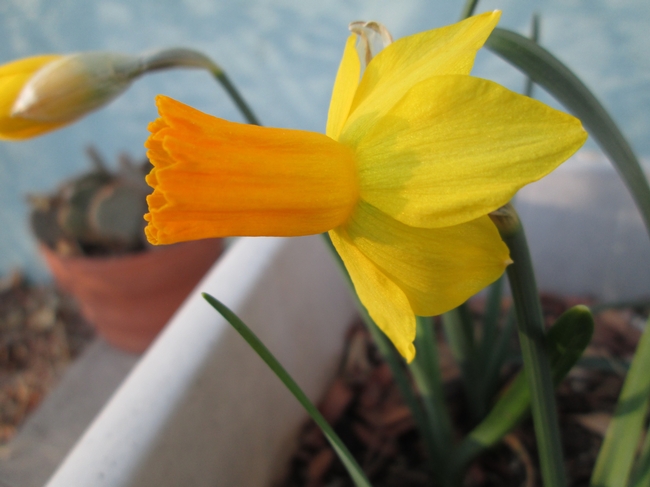
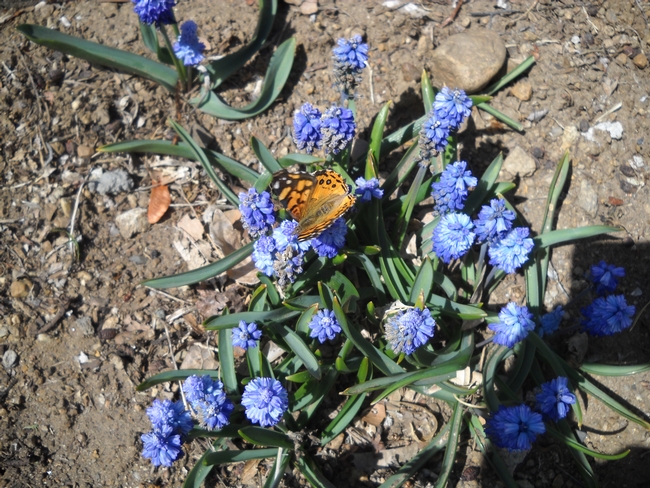
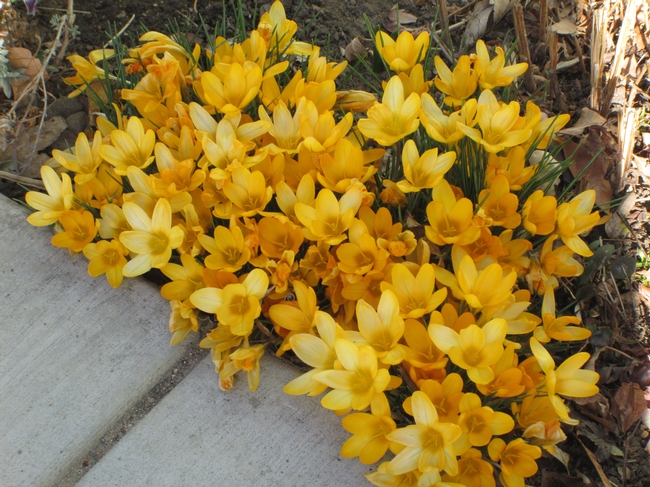
The other main type of crocus are the Dutch or Large Flowering types which can reach up to 5” but generally have fewer flowers per corm. They come in similar colors to those of the Species types. They grow in USDA Zones 4-8 but won't naturalize where winters are warm. Plant species crocuses about 4” deep and the larger ones an inch deeper.
- Author: Alison Collin
Chelsea Flower Show is England's premier showcase for horticultural endeavors. It features several show gardens designed by top designers, extraordinary displays by many specialist nurseries, trade stands selling a vast array of tools and gadgets, outstanding sculptures, paintings, exquisite embroidery, garden clothing and, of course, plants. There are hundreds of exhibitors.
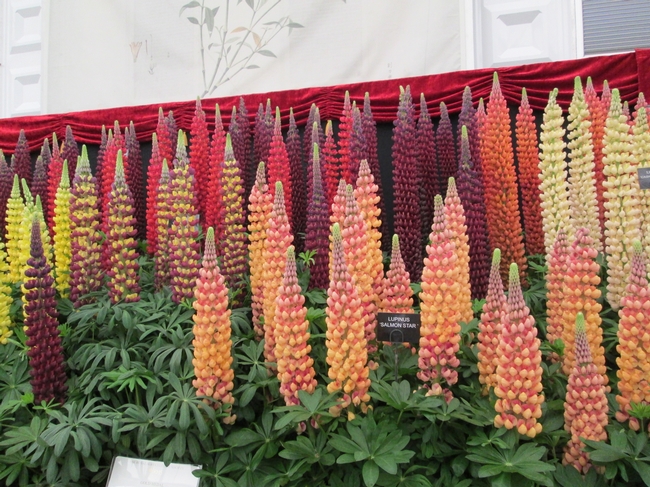
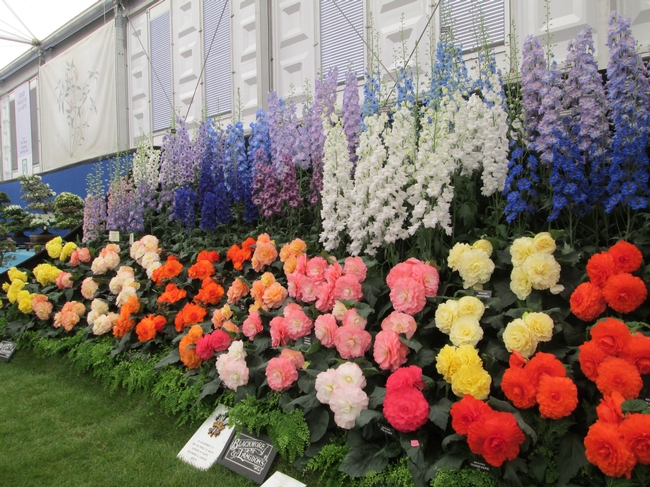
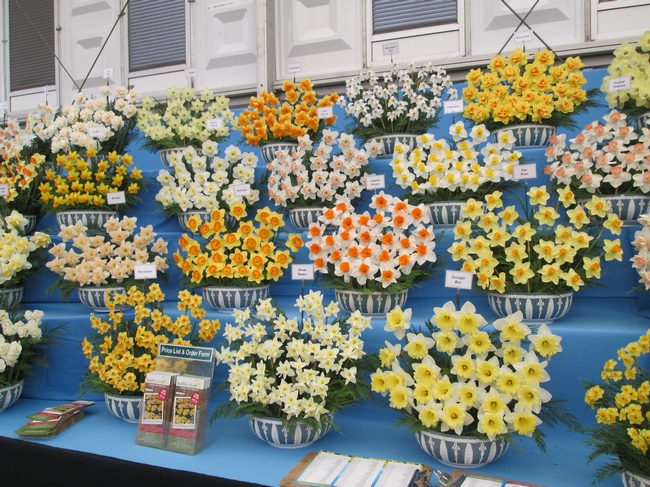
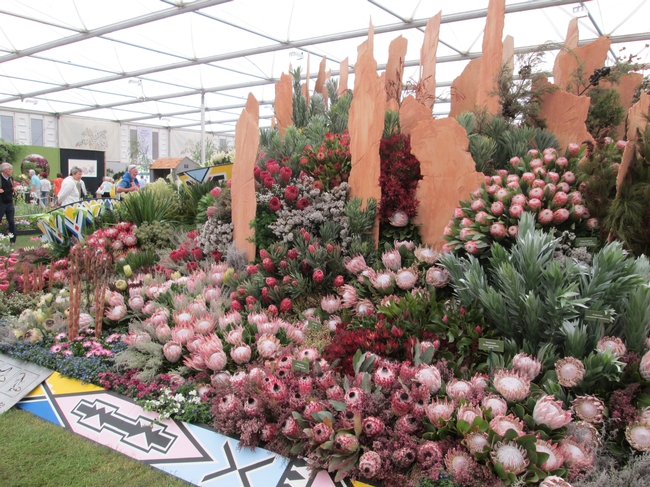
The center of the show is the Great Pavilion and to enter it is a truly jaw dropping experience. There are dozens of displays by nurseries from all over Britain and the rest of the world and every one is absolutely stunning. Some depict the traditional cottage garden with a mix of representative flowers, while others are dedicated to one particular specialty such as gladioli, carnivorous plants, hostas, house plants, vegetables, proteas, cacti or bonsai. Each of the thousands of plants and blooms is a perfect specimen! Stands of spring-flowering daffodils shown at their peak and autumn-flowering chrysanthemums are a testament to the skills that growers have in manipulating flowering times. There were educational displays on such topics as creating children's gardens, and one which detailed the results of genetic research on snapdragons growing wild in the European Alps. And then there are the spectacular floristry displays.
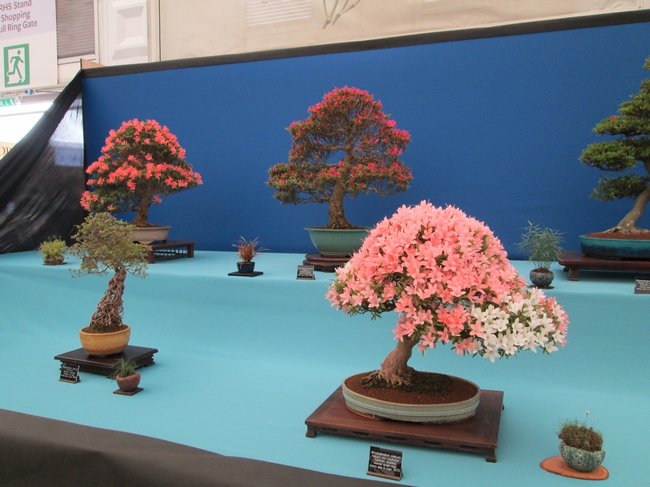
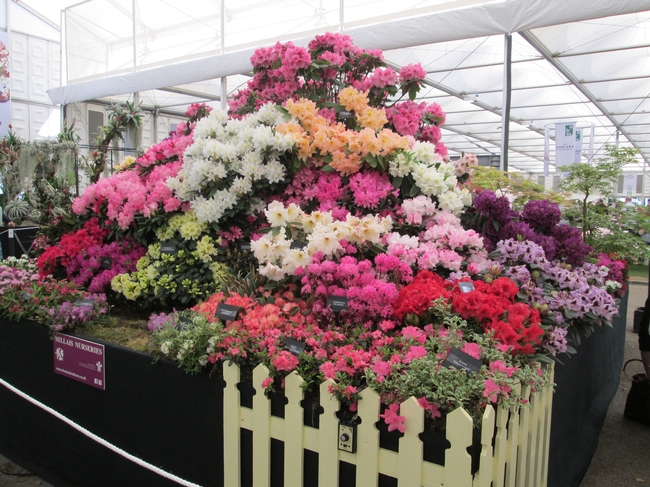
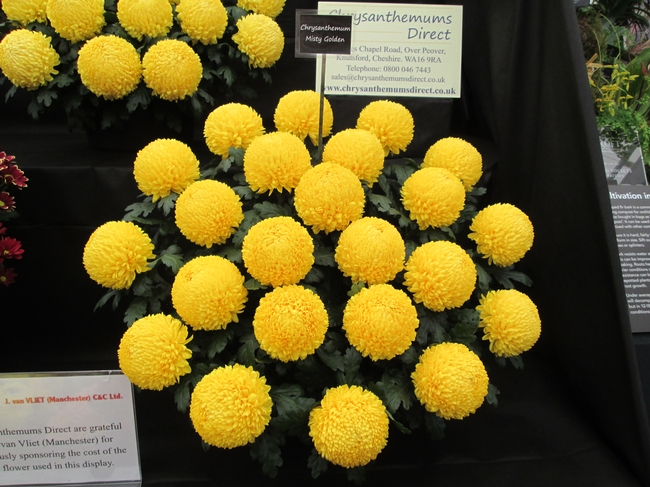
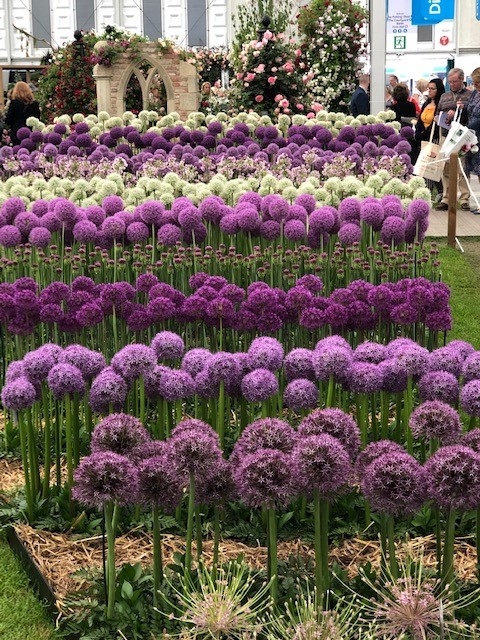
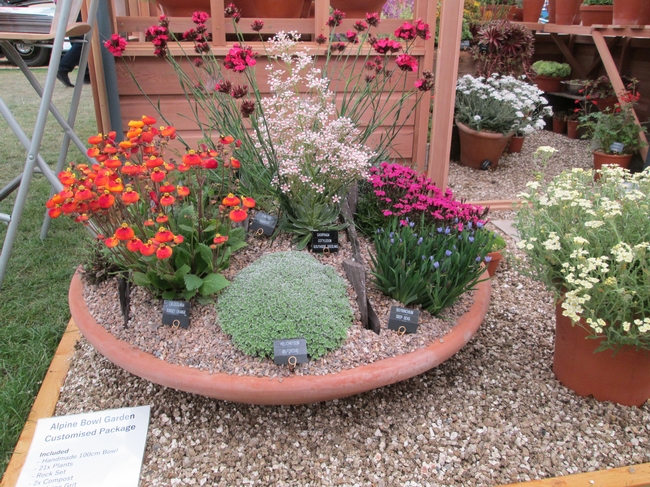
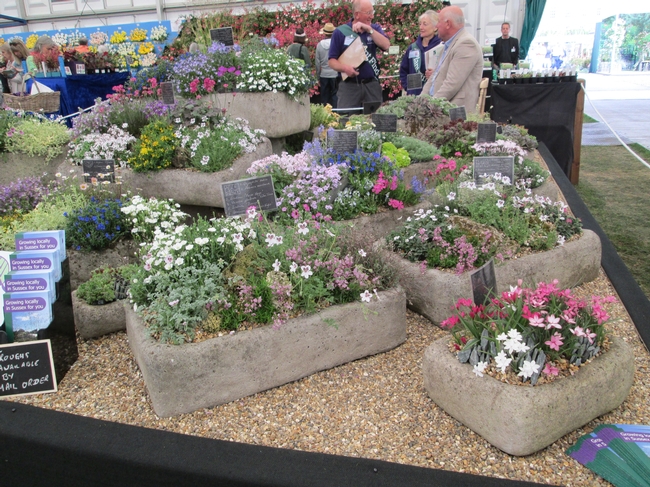
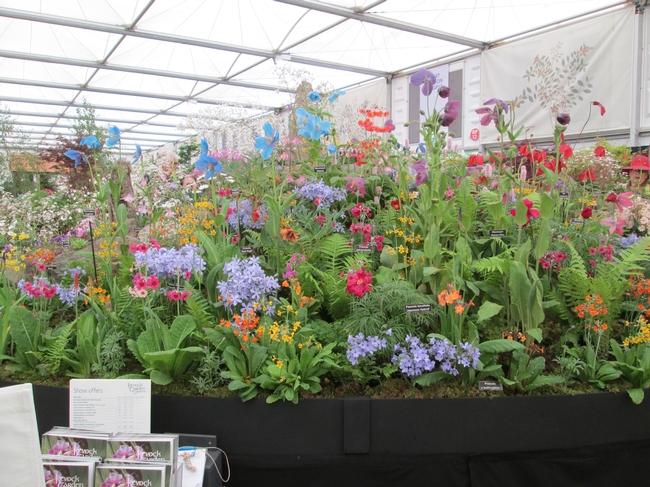
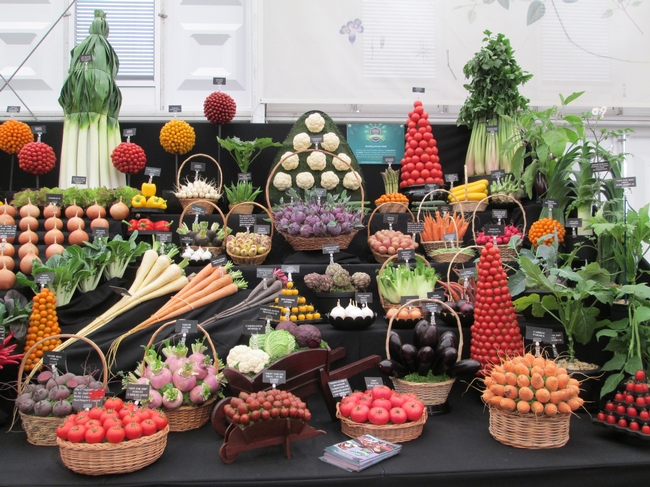
Outside of the Pavilion around the edge of the exhibition site are the 26 show gardens, each designed by a top designer and featuring different themes such as female-led, climate-smart agriculture in Sub-Saharan Africa, a Finnish garden, and one based on a Japanese herbal garden. English gardens also loomed large, such as one designed for a disused quarry site, one based on the canals of northern England, a garden designed for children in hospice care, and just too many others to mention here.
This link takes you on a tour of these gardens: http://rhs.org.uk/shows-events/rhs-chelsea-flower-show/Gardens
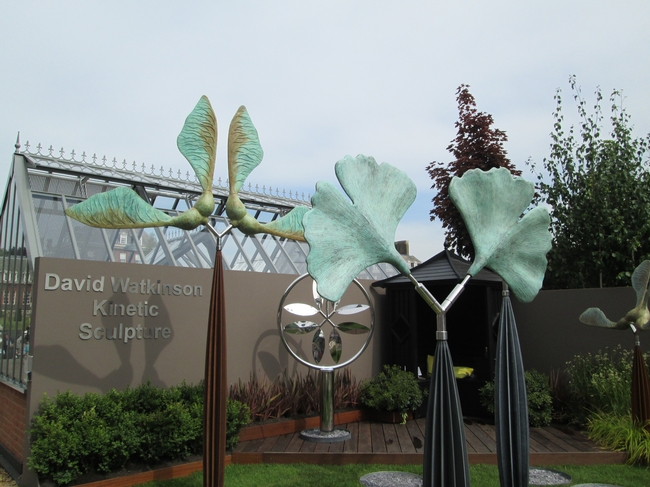
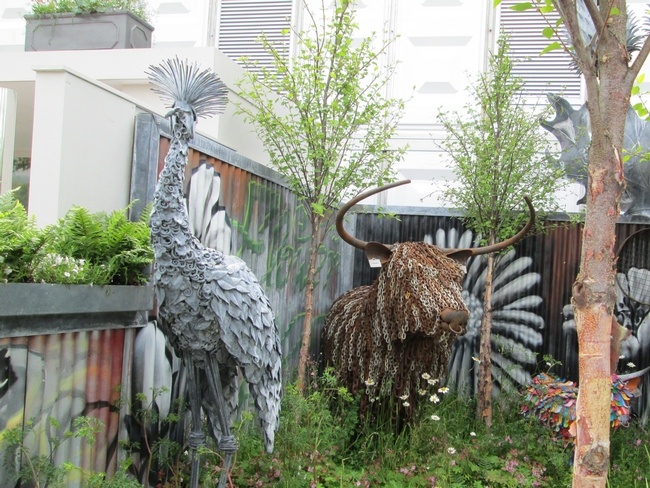
Some of the sculptures displayed were very imaginative, especially those made from driftwood, but I was particularly drawn to a huge metal foxglove about 10 feet high, and also some metal kinetic sculptures of maple seeds and ginkgo leaves.
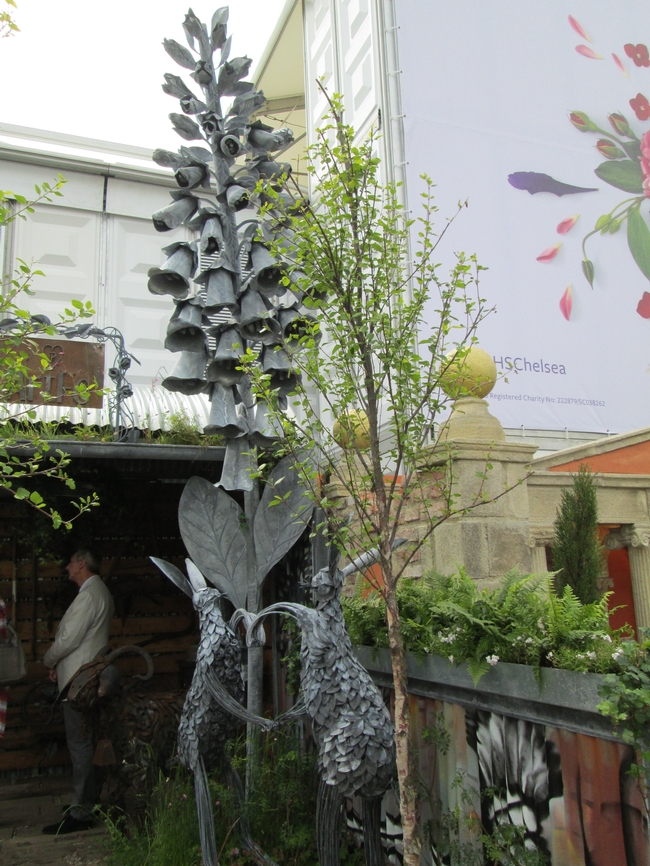

The shopping area had a magnificent array of tempting things to buy, but the constraints of my luggage on the airline kept my spending in check. I did however succumb to a new and very splendid garden trowel with a 75 year guarantee. After all, one can never have too many trowels!
Outside the show grounds many of the local shops had decked out their doorways with ebullient swags of fresh flowers.
As a child I attended Chelsea flower show annually but it is now fifty-five years since I was last there, and it did not let me down. The sheer magnificence, elegance and beauty of the whole experience will never be forgotten.
Now back to reality - the challenges of growing in a California high desert garden!


